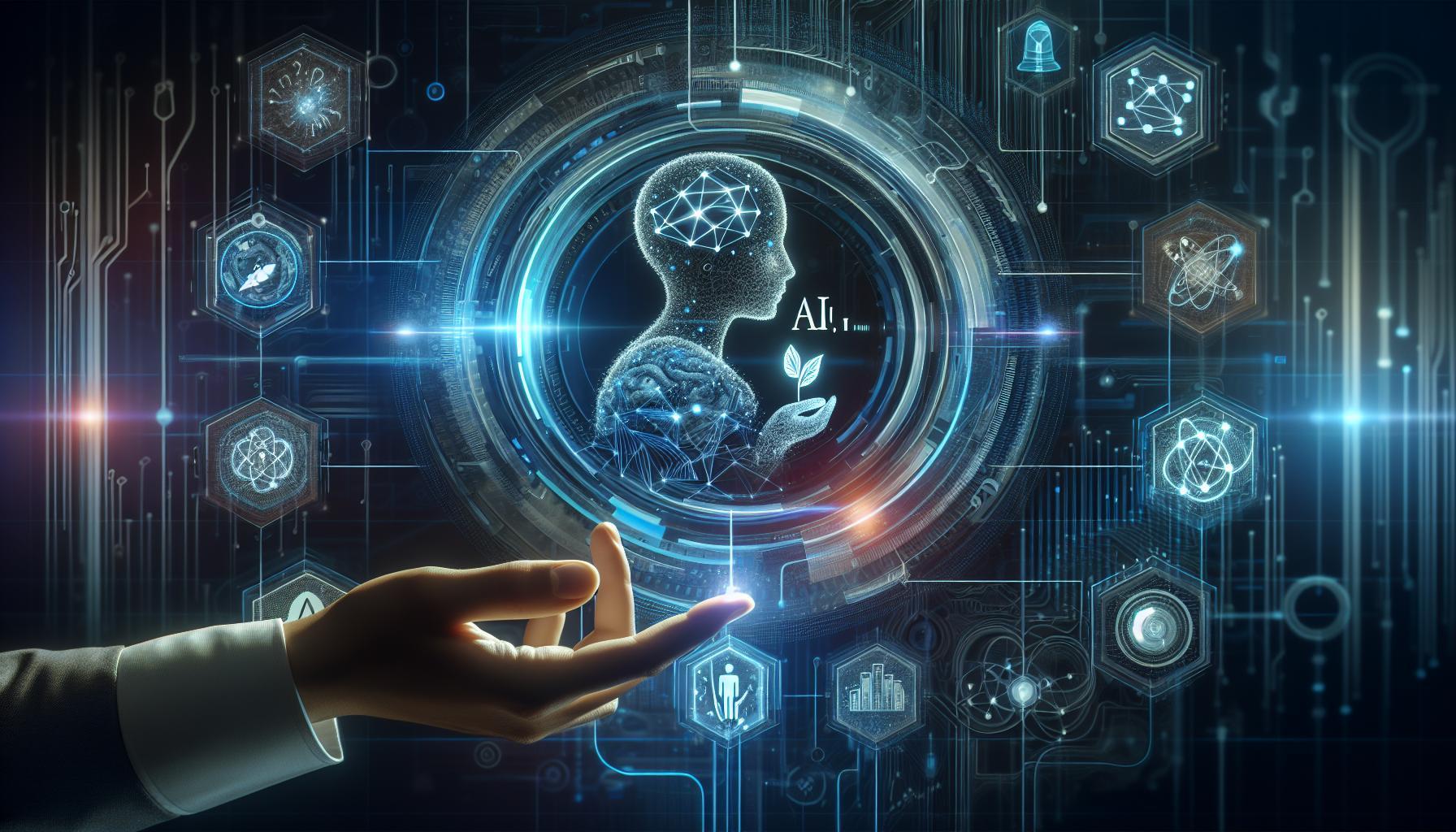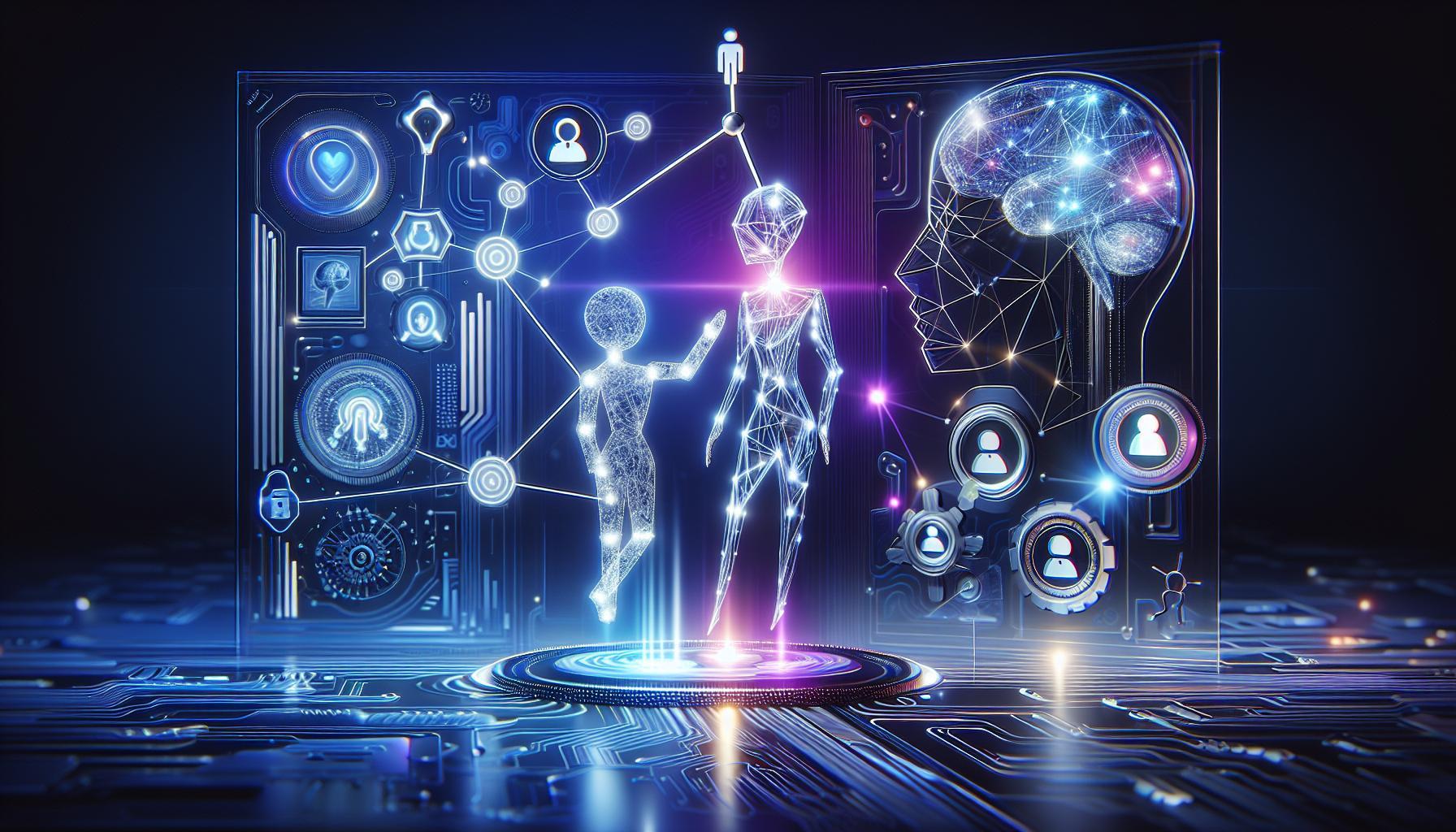As AI technology increasingly blurs the line between reality and manipulation, the emergence of tools that can alter images raises critical ethical concerns. This exploration delves into the implications of using AI for image modification, examining the potential risks, consent issues, and the broader impact on society, making it a crucial conversation in today’s digital landscape.
Real-World Impacts: Case Studies on AI Image Technology
In the rapidly evolving realm of AI image technology, the practical implications can be profound, affecting individuals and communities in often unexpected ways. As tools like those discussed in “Undress Her: Exploring the Ethics and Risks of AI Image Tools” become more accessible, several case studies illuminate their real-world impacts, underscoring both the innovative potentials and ethical dilemmas they present.
Case Study 1: Content Creation in Fashion
The fashion industry is one domain that has embraced AI image tools to revolutionize content creation. Brands like ASOS and Zara utilize AI to design virtual clothing that models can wear in photoshoots, helping streamline production and reduce costs associated with traditional photoshoots. This use of technology allows for rapid prototyping and the ability to test consumer reactions to trends before committing to actual production. However, it also raises questions about authenticity and representation, as real models may find fewer opportunities due to the rise of digital alternatives.
- Benefits: Cost efficiency, faster turnaround on trends, enhanced consumer engagement.
- Risks: Job displacement for human models and concerns over the representation of body types in digital formats.
Case Study 2: Privacy Violations in Social Media
On the flip side, AI image technology has been implicated in severe privacy violations. A notable instance involved a social media platform where images of unsuspecting individuals were altered to create non-consensual and explicit content, mirroring some themes highlighted in “Undress Her: Exploring the Ethics and Risks of AI Image Tools.” The tool that facilitated this transformation showcased the darker potential of AI, enabling malicious actors to easily manipulate faces and create digital nudity, which sparked outrage and led to calls for stricter regulations.
| Impact | Details |
|---|---|
| Emotional Distress | Victims often experience significant psychological harm from having their images misused. |
| Legal Repercussions | Many victims seek legal action against the platforms, leading to a reevaluation of existing laws. |
| Calls for Regulation | Increased advocacy for tighter regulations surrounding AI image tools and consent issues. |
Case Study 3: Art and Intellectual Property
AI toolkits are also reshaping the art world, allowing artists to generate pieces that incorporate various styles and techniques at unprecedented speeds. A high-profile case in the art community involved an artist who used AI image technology to create a series of digitally manipulated works. While many praised the innovation, others raised alarms about intellectual property rights, questioning whether traditional artists could protect their styles from being emulated and manipulated without authorization.
- Advantages: Democratization of art creation, potential for new forms of creative expression.
- Concerns: Ownership disputes, lack of credit for original artists, and diluting the value of traditional art forms.
By examining these case studies, it becomes evident that the applications of AI image tools are shaping societal norms, creating opportunities, and raising ethical dilemmas that must be addressed. Each example illustrates the balance necessary between leveraging technological advancements and safeguarding individual rights and creative expressions.
Navigating Legal Frameworks: What You Need to Know
The rapid evolution of artificial intelligence (AI) image tools has ushered in a digital landscape where creativity and ethics frequently collide. As these technologies advance, so too do the complexities of legal frameworks that govern their use and the production of generated content. Understanding the legal implications is crucial, especially for creators, developers, and users of AI image tools like those examined in “Undress Her: Exploring the Ethics and Risks of AI Image Tools.” The challenge lies not only in navigating existing laws but also in anticipating changes that may occur as society adapts to these new capabilities.
Core Legal Concepts to Consider
When utilizing AI image tools, several essential legal concepts should be front and center:
- Copyright Laws: AI-generated images can raise questions about authorship and ownership. It’s vital to comprehend how copyright laws apply to both the input (the data used to train the AI) and the output (the images produced).
- Privacy Rights: The use of real people’s likenesses without permission may lead to legal disputes over privacy violations. This is especially pertinent in the context of tools that synthesize images of individuals.
- Defamation and Misrepresentation: AI-generated content can accidentally or intentionally cause harm by misrepresenting individuals, which results in potential legal consequences.
- Terms of Service and Licensing: Understanding the licensing agreements from AI tool providers is essential. Users must know what rights they have over the images created and any restrictions imposed.
Staying Compliant with Regulations
As you navigate the legal landscape, consider employing the following actionable steps to ensure compliance:
- Conduct Regular Legal Audits: Regularly reviewing your practices related to AI-generated content can help ensure compliance with current laws.
- Engage Legal Counsel: Consulting with a lawyer who specializes in intellectual property and technology can provide tailored advice to your specific situation.
- Implement Ethical Guidelines: Establish protocols for ethical usage of AI images to mitigate risks associated with misuse.
The landscape of AI technology is both exciting and fraught with uncertainty. To translate this innovation into responsible practice, it’s imperative to stay informed about the evolving legal frameworks surrounding these tools, as explored in “Undress Her: Exploring the Ethics and Risks of AI Image Tools.” The risks associated with mismanagement can lead to significant legal repercussions, making it essential for individuals and organizations to cultivate a culture of compliance and ethical responsibility in their approach to AI-generated content.
Table of Key Legal Considerations
| Legal Aspect | Description | Action Item |
|---|---|---|
| Copyright | Who owns the images created by AI? | Review copyright policies |
| Privacy | Are you using personal likenesses without consent? | Obtain consent when necessary |
| Defamation | Does the image misrepresent someone? | Consider the potential harm |
| Licensing | What rights do you have over AI-generated images? | Carefully read terms of service |

Best Practices for Responsible Use of AI Image Tools
In an era where AI image tools are permeating every corner of society, the implications of their misuse have never been more pressing. The conversation surrounding the responsible use of these technologies, as examined in “Undress Her: Exploring the Ethics and Risks of AI Image Tools,” highlights the importance of ethical considerations for both creators and consumers alike. To navigate this digital frontier, it is imperative that individuals and organizations adhere to best practices that not only uphold the integrity of their work but also respect the rights and dignity of others.
Understanding Consent and Ownership
One of the cornerstones of ethical AI tool usage is ensuring that individuals portrayed in images provide their clear and informed consent. With the ability to create hyper-realistic images, it becomes essential to:
- Secure Permission: Always obtain explicit consent from individuals before using their likenesses in any AI-generated content.
- Respect Privacy: Understand that the right to privacy extends into digital realms—what might be permissible in real life could be damaging online.
- Clarify Ownership: Clearly establish who owns the images produced by AI tools, and how those images can be used in the future.
Effectively Addressing Misuse and Misinformation
The potential for AI image tools to propagate misinformation and harmful stereotypes is significant. To mitigate these risks, it’s crucial to adopt practices that promote transparency and accountability:
- Label AI Creations: Clearly mark AI-generated images to differentiate them from real photographs to avoid misleading viewers.
- Challenge Stereotypes: Utilize these tools to reinforce positive narratives and diverse representations rather than perpetuating harmful cliches.
- Encourage Critical Thinking: Provide audiences with tools and knowledge to discern between authentic content and AI-manipulated images.
Creating Ethical Guidelines for AI Tools
Organizations and content creators should establish comprehensive guidelines that dictate the ethical use of AI in image creation. These guidelines would ideally include:
- Regular Training: Equip teams with ongoing education on the ethical boundaries surrounding AI tools, drawing insights from discussions in pieces like “Undress Her: Exploring the Ethics and Risks of AI Image Tools.”
- Review Processes: Implement a multi-tiered review system that evaluates the intended use of AI-generated images and their potential impact on individuals and communities.
- Stakeholder Engagement: Involve diverse voices in the conversation, ensuring that the guidelines cater to various perspectives, especially marginalized ones.
| Best Practice | Action Step | Outcome |
|---|---|---|
| Secure Permission | Obtain explicit consent from individuals. | Enhanced trust and ethical compliance. |
| Label AI Creations | Clearly mark all AI-generated images. | Reduced misinformation and greater transparency. |
| Establish Guidelines | Create comprehensive protocols for AI image usage. | Standardized practices promoting ethical standards. |
With AI image tools continuing to evolve, a proactive approach to ethical use is essential. By prioritizing consent, transparency, and comprehensive guidelines, creators can harness these technologies responsibly while contributing positively to a shared digital landscape. The insights from “Undress Her: Exploring the Ethics and Risks of AI Image Tools” serve as a valuable foundation for fostering a culture of responsibility and integrity in this rapidly changing environment.
The Role of Consent: Defining Boundaries in AI Applications
In today’s digital landscape, the introduction of AI image tools has revolutionized various creative fields, coming with remarkable innovations and equally significant ethical dilemmas. The powerful capabilities of these tools raise important questions about the role of consent and the establishment of boundaries. As we delve into the discussions surrounding “Undress Her: Exploring the Ethics and Risks of AI Image Tools,” understanding how consent interfaces with AI applications is crucial in navigating potential misuse.
Understanding Consent in AI Manipulation
Consent is not merely a legal formality; it embodies a fundamental principle of respect and autonomy in any interaction, especially when it involves personal images. In the realm of AI-generated content, individuals often find their likenesses manipulated without their knowledge or permission. This exploitation can lead to serious reputational harm and psychological distress. The necessity for informed consent becomes critical, as users should be fully aware of how their images might be altered or utilized.
Some key considerations include:
- Explicit Agreement: Users must provide clear and affirmative consent before their images are processed by AI tools.
- Transparent Usage Policies: Companies should openly disclose how images will be used, shared, or transformed.
- Withdrawal of Consent: Individuals should have the right to revoke their consent at any point and have their images removed from AI systems.
Establishing Boundaries Through Ethical Practices
To foster a responsible AI environment, companies and developers must adhere to ethical guidelines that prioritize consent and boundary-setting. This can be illustrated through a framework that balances innovation with respect for individual rights:
| Guideline | Description |
|---|---|
| Prioritize User Education | Provide comprehensive information about AI image manipulation processes. |
| Implement Consent Verification Mechanisms | Use technology that ensures consent is obtained and easily revocable. |
| Set Ethical Governance Standards | Create an oversight committee to review AI applications and safeguard user rights. |
As we explore the landscape of AI image tools, the lessons learned from the discourse on “Undress Her: Exploring the Ethics and Risks of AI Image Tools” highlight the necessity for a collective commitment to ethical practices. By putting individuals’ rights at the forefront and fostering a culture of consent, we can better navigate the complexities that arise from technological advancements while protecting the dignity and privacy of everyone involved.
Future Trends: Where AI Image Technology is Heading
As artificial intelligence (AI) continues to evolve, the capabilities of image generation and manipulation tools have advanced dramatically, leaving a profound impact on industries ranging from entertainment to fashion. The combination of powerful algorithms and deep learning techniques allows users to create hyper-realistic images, raise ethical concerns, and invite scrutiny regarding the ramifications of such technology. The implications of tools like those discussed in “Undress Her: Exploring the Ethics and Risks of AI Image Tools” extend beyond mere artistic expression; they foreshadow a future intertwined with both innovation and ethical dilemmas.
Key Trends Influencing AI Image Technology
The trajectory of AI image technology can be mapped through several pivotal trends that are shaping its development:
- Increased Personalization: Future AI tools will leverage user data to generate highly personalized images tailored to individual preferences, creating a more immersive and engaging experience.
- Enhanced Accessibility: As AI image tools become more sophisticated, they will also become more accessible, allowing non-experts to create high-quality visuals without needing extensive technical knowledge.
- Collaboration with Artists: AI is expected to augment rather than replace traditional artistic methods. Future platforms may foster collaborative environments, where human creativity and AI capabilities intertwine seamlessly.
- Improved Ethical Standards: Ongoing discussions about the ethical implications of AI image technology, highlighted in “Undress Her: Exploring the Ethics and Risks of AI Image Tools,” are likely to lead to the establishment of more robust regulations and guidelines governing acceptable uses of AI in imaging.
Emerging Applications and Use Cases
The application of AI in image technology is also set to diversify, with innovative use cases emerging across various sectors.
| Sector | Potential Applications |
|---|---|
| Fashion | Virtual try-ons and styling recommendations based on user profiles. |
| Healthcare | AI-generated visuals for medical education and patient illustrations. |
| Entertainment | Creating digital doubles for actors or generating entire scenes dynamically. |
| Advertising | Customized marketing materials that resonate more deeply with target audiences. |
These advancements will not only revolutionize how creators approach their crafts but also raise critical questions about authenticity and the nature of consent. As AI continues to blur the lines between reality and creation, the insights gained from “Undress Her: Exploring the Ethics and Risks of AI Image Tools” will be crucial in guiding responsible innovation.
In the coming years, the confluence of technology and ethical considerations will shape the narrative around AI image tools, compelling stakeholders to engage in ongoing dialogue regarding the consequences that accompany these powerful technologies. As we look to the future, adaptability and intentionality will be vital for navigating the complexities that arise from this rapidly evolving landscape.
FAQ
What is ‘Undress Her: Exploring the Ethics and Risks of AI Image Tools’?
‘Undress Her: Exploring the Ethics and Risks of AI Image Tools’ refers to a discussion about the moral implications and potential dangers associated with using AI technology for generating or manipulating images of individuals, particularly in a degrading or non-consensual manner.
As AI image tools become increasingly accessible, ethical considerations arise. The focus is on how these technologies can impact privacy, consent, and the potential for misuse. Understanding these issues is crucial for responsible use and development of AI.
Why does AI image manipulation raise ethical concerns?
AI image manipulation raises ethical concerns because it can be used to create non-consensual images, leading to privacy violations and emotional harm.
Tools that can artificially generate or alter images often lack adequate mechanisms to ensure the consent of the individuals depicted. This presents risks such as identity theft, harassment, and the proliferation of misleading or damaging content online. Educational resources are available for those seeking to understand the importance of ethical standards in AI.
Can I use AI image tools responsibly?
Yes, you can use AI image tools responsibly by adhering to ethical guidelines and respecting the rights and consent of individuals depicted in any images.
Practicing responsible use means being informed about the ethical implications and potential consequences of your actions. Ensuring consent from individuals before using their likeness and being transparent about the use of AI tools helps maintain integrity in your work. For more insights, visit our section on ethical guidelines for AI tools.
What risks are associated with using AI image tools?
The primary risks of using AI image tools include privacy invasion, spreading misinformation, and potential legal ramifications, especially if images are created without consent.
Furthermore, these risks can lead to severe emotional and psychological impacts on individuals whose images are manipulated. Understanding these risks helps users navigate the landscape of AI responsibly and encourages a culture of respect and ethical behavior in digital spaces.
How can I ensure consent when using AI image tools?
To ensure consent when using AI image tools, always seek explicit permission from individuals before creating or sharing their images.
This might involve obtaining written consent and informing them about the intended use of the AI-generated images. Building trust and maintaining open communication are key factors in ensuring ethical practices when using AI technologies.
Why is it important to discuss the ethics of AI image tools?
Discussing the ethics of AI image tools is vital because it raises awareness about potential harms and promotes responsible use of technology.
As these tools become more prevalent, fostering discussions around their ethical implications encourages developers, users, and policymakers to create frameworks that prioritize human rights and dignity, thereby preventing misuse and abuse of AI technologies.
What can policymakers do to regulate AI image tools?
Policymakers can regulate AI image tools by establishing clear laws and guidelines that address the creation and use of manipulated images, protecting individuals’ rights.
Such regulations might include requirements for consent, transparency in the use of image manipulation, and penalties for malicious use of AI tools. Collaborative efforts between technology experts and lawmakers can help build an ethical landscape for AI applications.
Wrapping Up
As we wrap up our exploration of “Undress Her: Exploring the Ethics and Risks of AI Image Tools,” it’s important to reflect on the fundamental questions raised throughout this discussion. We delved into the technical underpinnings of AI image generation, shedding light on how these tools operate, as well as their profound impact on privacy, consent, and digital ethics. By understanding the delicate balance between innovation and responsibility, we empower ourselves to navigate the evolving landscape of AI technologies with awareness and caution.
The ethical implications are significant, affecting not only creators but also the wider community. Recognizing the potential risks associated with misuse can lead to more informed decisions in both personal and professional contexts. We encourage you to further investigate these topics, engage in meaningful conversations, and consider how the capabilities of AI can be harnessed for positive outcomes.
The journey into AI ethics doesn’t end here. We invite you to explore additional resources, participate in community discussions, and stay informed about the latest developments in this fast-paced field. Your awareness and curiosity are crucial in shaping a responsible future for AI technologies. Together, we can foster a digital environment that prioritizes respect, creativity, and ethical progress.





